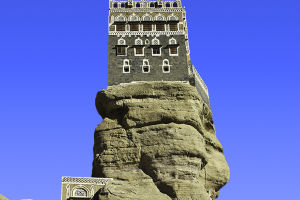Hello, fellow travelers! If you're dreaming of adventure, breathtaking landscapes, and world-class experiences, the Alps are waiting for you. Stretching across eight countries in Europe, the Alps offer everything from serene lakes to towering peaks and charming villages.
In this guide, we’ll share all the essential details you need for your trip, including ticket prices, best visiting times, transportation options, and useful tips to help you make the most of your experience. Let’s dive in!
Where are the Alps Located?
The Alps stretch across eight European countries: France, Switzerland, Italy, Austria, Germany, Slovenia, Liechtenstein, and Monaco. These mountains divide northern and southern Europe, offering stunning landscapes, rich history, and a blend of cultures. With an average elevation of 3,000 meters, the Alps provide a striking contrast between northern regions with moist climates and southern areas that are drier with minimal rainfall.
The Highest Peaks: Mont Blanc and More
The highest peak in the Alps is Mont Blanc, located at the border of France and Italy, standing at 4,810.45 meters (15,782 feet). For visitors looking to hike or climb, Mont Blanc is an iconic destination. If you plan to summit or take a guided tour, be prepared for a challenging adventure. The cost for guided tours ranges from $320 to $1,600, depending on the package and the season.
For those not seeking an extreme adventure but still want to enjoy the views, Mont Blanc has a cable car service from Chamonix (France) to Aiguille du Midi, which costs around $70 for a round-trip ticket. This service is available from mid-June to mid-September, with some closures during the winter months due to weather conditions.
What to Do in the Alps: Activities and Attractions
The Alps offer something for everyone, no matter your interests. Here are some top activities to consider:
1. Skiing and Snowboarding: Winter (December to March)
During winter, ski resorts in France, Austria, Switzerland, and Italy are bustling with visitors. Notable resorts include Chamonix, Zermatt, St. Anton, and Val d'Isère. A ski pass costs around $55 to $75 per day, depending on the resort.
2. Hiking and Trekking: Summer (June to September)
For those visiting during the warmer months, the Alps offer spectacular hiking trails. The Tour du Mont Blanc, which takes about 10-12 days to complete, is one of the most famous trekking routes, offering panoramic views of the Alps. Many trails are free to access, but guided tours for complex routes may cost anywhere between $55 and $165 per day.
3. Cycling: Summer (June to September)
The Alps are also famous for their cycling routes, particularly those popular with Tour de France fans. Renting a bike for a day can cost around $35 to $65, depending on the type of bike.
4. Relaxing by Alpine Lakes: All Year
If you prefer a more laid-back experience, visiting the Alps' stunning lakes is a must. Lake Geneva (Switzerland), Lake Annecy (France), and Lake Como (Italy) are some of the most scenic options. Many of these lakes offer boat tours that cost approximately $22 to $55 per person for a day trip.
When is the Best Time to Visit the Alps?
The best time to visit the Alps depends on the activities you enjoy:
Winter (December to March): Ideal for skiing, snowboarding, and other winter sports. However, be prepared for higher costs and crowds during Christmas and New Year holidays.
Summer (June to September): This is the best time for hiking, cycling, and enjoying the warm weather. Trails are open, and the Alpine meadows are in full bloom. The weather is mild, but it's always a good idea to bring layers, as temperatures can drop at higher elevations.
Spring (April to May) and Autumn (October to November): These shoulder seasons offer fewer tourists and lower prices, but some attractions or mountain trails may be closed due to snow or weather conditions.
Transportation in the Alps
Getting around the Alps is relatively easy, thanks to a well-developed transportation network. Here are your best options:
1. Train Travel:
The train system in the Alps is extensive, efficient, and offers scenic routes. The Swiss Travel Pass is an excellent option for tourists, allowing unlimited travel on trains, buses, and boats within Switzerland. Prices for a 3-day Swiss Travel Pass start at around $160.
2. Cable Cars and Funiculars:
Cable cars are a popular way to reach mountain peaks, such as the cable car from Chamonix to Aiguille du Midi. Expect to pay around $70 for a round-trip ticket. Many ski resorts also have cable car services that can be used year-round.
3. Car Rental:
Renting a car is a great way to explore more remote areas, especially in Italy and Switzerland. Car rental prices vary, but expect to pay around $55 to $110 per day.
4. Buses:
Many regions also have bus services that connect key attractions. For instance, in the French Alps, buses connect major ski resorts, and tickets typically cost $11 to $33 depending on distance.
Useful Tips for Visiting the Alps
Pack Appropriately: Weather can change quickly in the mountains. Be sure to bring layers, waterproof clothing, and sturdy footwear for hiking or skiing.
Book in Advance: Especially during peak seasons, popular hotels and resorts can fill up quickly. Booking your accommodation and activities well in advance is recommended.
Hydrate and Acclimatize: If you're planning on hiking or climbing at high altitudes, drink plenty of water and allow your body time to adjust. Altitude sickness is a real concern for some, so take it easy on your first day.
Respect the Environment: The Alps are a delicate ecosystem, so make sure to follow marked trails, avoid littering, and respect wildlife.
Your Alpine Adventure Awaits!
The Alps are waiting for you, offering unforgettable experiences at every turn. From world-class skiing to scenic hiking and cycling routes, there’s something for everyone. Whether you’re planning to conquer Mont Blanc or simply relax by an alpine lake, the Alps promise an adventure like no other.
Thank you for reading, Lykkers! Have you visited the Alps or are you planning your first trip? Let us know your favorite Alpine destination and share your travel tips in the comments below! Safe travels!


